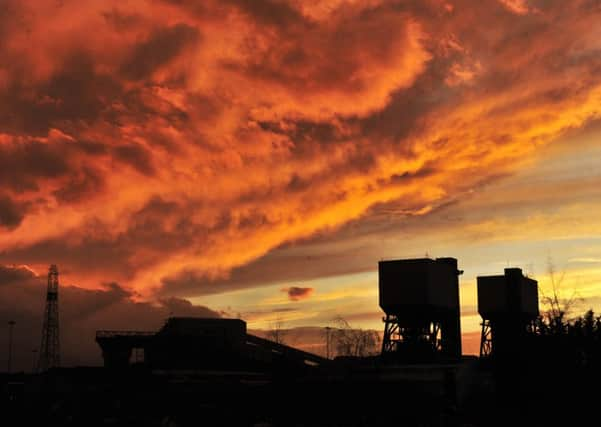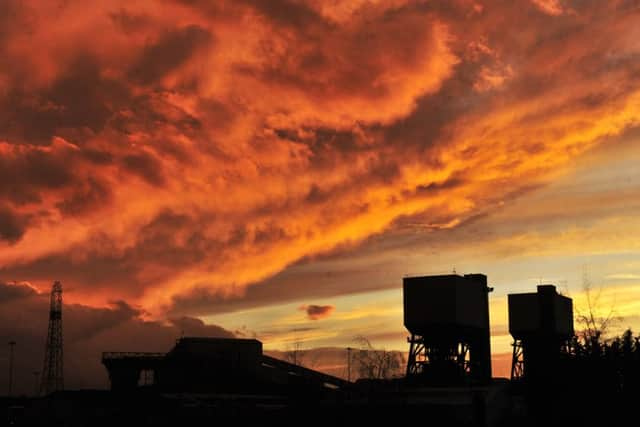The definitive A-Z of Yorkshire coal... in honour of the people of Kellingley


A is ARTHUR SCARGILL - leader of the National Union of Mineworkers for 20 years from 1982, Scargill was Yorkshire NUM president during the 1974 strike and introduced new levels of militancy to the industry. Widely blamed for the failure of the 1984-85 strike which accelerated the industry’s decline.
B is for BARNSLEY - one-time centre of the Yorkshire coalmining industry and a town which has suffered more than most from the pit closures that began prior to the 1984-85 strike and which accelerated afterwards. Remains the home of both the National Union of Mineworkers and its former leader, Arthur Scargill who lives in Worsborough.
C is for COAL - Enough said.


Advertisement
Hide AdAdvertisement
Hide AdD is for DEARNESIDE - the comprehensive school at Goldthorpe, Barnsley, attended by brothers Paul, 15, and Darren Holmes, 14, who were killed in November 1984 when an embankment collapsed on them as they were digging coal to heat the homes of striking miners.
E is for EXPORTS - mining’s decline in Yorkshire has come in an era which has seen countries like China, India and Japan export increasing amount of coal, bringing down the price and making domestic fuel uncompetitive. The UK is now largely reliant for its coal supplies on China, who also hold the key to the future of our nuclear energy.
F is for FUTURE - despite the closure of Kellingley Colliery, coal mining is set to continue in Yorkshire, albeit on a small scale at Crofton near Wakefield where a workers’ co-operative are planning on sinking a shallow drift mine to extract rich and valuable reserves.
G is for GAS - the detection and extraction of inflammable gas has always focused the minds of mining companies, with mixed success. In 1866 an underground explosion at Oaks Colliery in Barnsley killed 361 miners, 27 rescuers and dozens of pit ponies. The Oaks Disaster remains the biggest loss of life ever in a Yorkshire mine.
Advertisement
Hide AdAdvertisement
Hide AdH is for HEATH, TED - Prime Minister Ted Heath’s Government was overthrown when he called a snap election in 1974 following a three-week strike by the miners over pay and conditions. The outcome served too steel Margaret Thatcher’s determination not to suffer the same fate 10 years later.
I is for IAN MacGREGOR - Having reduced the number of steelworkers from 166,000 to 71,000 during his three-year tenure as chairman of British Steel, MacGregor was appointed head of British Coal in 1983 and oversaw the industry’s dramatic decline throughout the strike of 1984-85.
J is for JOE GORMLEY - the leader of the NUM between 1971 and 1982, Gormley lost the confidence of the miners when he rejected claims for a national strike in 1981 despite 87.6 per cent for industrial action over pay. His confusing reforms of the NUM were a contributory factor in the controversial decision not to hold a strike ballot in 1984.
K is for KELLINGLEY - one-time superpit and the last deep coal mine in the UK to produce coal before its closure today, Friday December 18, 2015. At its height the North Yorkshire mine employed over 2,000 men: the remaining 400 were made redundant today.
Advertisement
Hide AdAdvertisement
Hide AdL is for LOFTHOUSE - in 1973 three million gallons of water from an abandoned 19th century mineshaft flooded Lofthouse Colliery near Wakefield, trapping seven miners 750 feet underground. After a desperate seven-day rescue operation, just one body was recovered. An inquiry revealed that NCB surveyors had failed to check historical records.
M is for MUCK STACK - also known as spoil heaps or slag heaps, these mini-mountains were created from all the rock and debris dug from underground during the mining process. Since 1985 many have been landscaped with a layer of topsoil and planting to create country parks where redundant miners can walk their dogs.
N is for NATIONAL COAL MINING MUSEUM - the former Caphouse Colliery between Wakefield and Huddersfield is now the only remaining deep coal mine in England, although coal extraction ended in 1985. A fascinating and moving experience featuring underground tours that tells the story of Yorkshire coalmining.
O is for ORGREAVE - the Battle of Orgreave was the bloodiest day in the 1984-85 strike when picketing miners clashed with police outside the British Steel coking plant in South Yorkshire. Despite widespread belief that the high levels of violence used against the pickets was sanctioned by the Government, calls for a public inquiry have been rejected.
Advertisement
Hide AdAdvertisement
Hide AdP is for PADDY - as coal was mined and extracted, the coalface became ever more distant from the pit bottom leaving miners with long journeys to start work. To reach the face, men travelled on rope- or diesel-powered manriders called paddies, or paddy wagons.
Q is for QUALIFICATIONS - few of the qualifications gained by men during their mining careers are transferable to other industries. Many miners at Kellingley are now taking advantage of funding from Jobcentre Plus to retrain and acquire the new skills they will need to find employment.
R is for REDUNDANCY - the workforce at Kellingley will walk away with a fraction of the redundancy payments received by their colleagues in recent years. The maximum statutory redundancy has been set at £14,250: some of the longest serving miners will get just £350 for each year of service.
S is for SILICOSIS - a lung disease suffered by many miners from breathing in silica dust during the mining process. Silicosis is a form of pneumoconiosis which had a debilitating effect on the health of men who had worked underground for long periods.
Advertisement
Hide AdAdvertisement
Hide AdT is for THATCHER, MARGARET - after backing down to a strike threat in 1981, Prime Minister Margaret Thatcher displayed a ruthless determination to break the NUM in 1984 when her Government held firm throughout the year-long strike. She later described miners’ leaders as “revolutionaries who sought to impose a Marxist system on Britain, whatever the means and whatever the cost.”
U is for UNION - the closure of Kellingley Colliery leave the National Union of Mineworkers with just 100 paying members, many of whom work in opencast mines. At its height the union had more than half a million members. Its 12 full time staff now spend much of their time advising former miners about the benefits system.
V is for VENTILATION - essential for the operation of any deep pit, where deadly gases including methane, carbon monoxide, nitrogen oxide and carbon dioxide build up during the mining process. Temperatures underground could also exceed 40 degree Celsius and maintaining a flow of cool, clean air was needed to control level of coaldust.
W is for WINDING GEAR - the most recognisable feature of any deep mine, the winding gear was the mechanism that lowered men and equipment from the pit head to the bottom in cages, often hundreds of metres underground.
Advertisement
Hide AdAdvertisement
Hide AdX is for X-RATED - in an industry where the workforce is almost exclusively male, the work rough and the conditions often grim, the language used underground is invariably choice. Swearing has its place, though, as any decent miner will confirm. ‘Pit language’ should not be used in the presence of women and children.
Y is for YORKSHIRE - since the miners’ strike of 1984-85 a total of 56 coal mines have closed in Yorkshire. The last three pits to close have been Hatfield, Doncaster (2015), Maltby (Rotherham) and Kellingley (2015)
Z is for ZEBEDEE - a large, coiled electrical cable used underground and named after the Magic Roundabout character. Thousands of miles of Zebedee cables now lay unused and buried in Yorkshire pits: quite what archaeologists will make of them and the other mining furniture in future millennia is anyone’s guess. Time for bed.